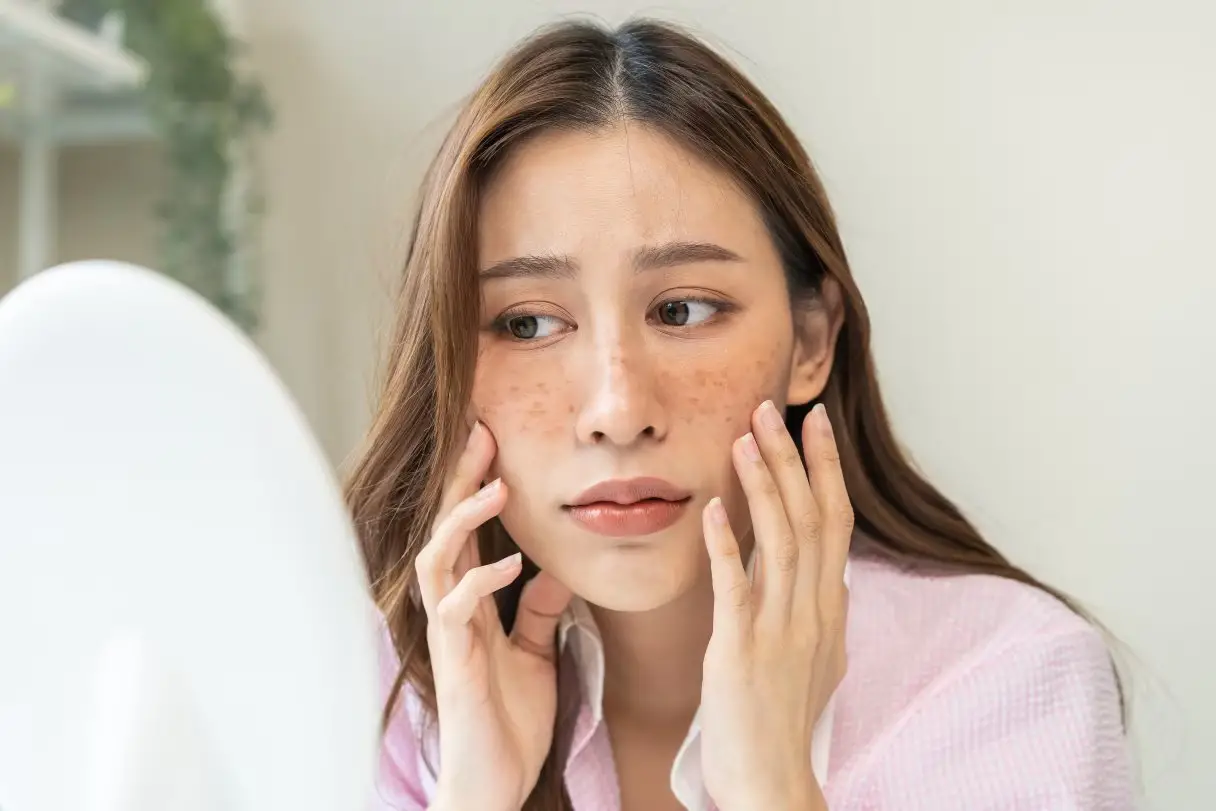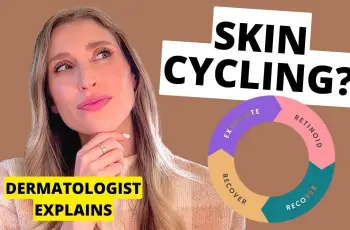
Sun Spots: Causes, Treatment, and Prevention
Sun spots, also known as dark spots or age spots, are a common skin concern for many people, especially as they age. While often harmless, sun spots create an uneven skin tone and are often a cosmetic concern. That said, any changes to the skin caused by sun exposure are a sign of DNA damage, so it is essential to take steps to prevent sun spots from showing up on your skin.
If you have existing sun spots from previous unprotected sun exposure, however, don’t worry – there are ways to get rid of these dark spots on the skin and restore a clearer, more even skin tone and texture.
As a thank you for reading our educational content, use the one-time code “STSBlog20” at checkout for 20% off anything in our store.
Sun spots are caused by accumulated UV exposure.
They can be treated with topical skin-brightening ingredients and/or in-office treatments.
Prevent dark spots with diligent sun-protection habits like wearing daily sunscreen and seeking shade when outdoors.
What Are Sun Spots?
Sun spots are flat, brown, gray, or black spots that typically appear on the skin that has had the most sun exposure over the years. These include areas like the face, shoulders, and backs of hands. They are caused by the overproduction of melanin, the pigment responsible for skin color, due to prolonged exposure to ultraviolet (UV) rays from the sun or tanning beds.
Sun spots do not always show up right away. In fact, they can show up months or years after prolonged sun exposure. This is why they are sometimes referred to as “age spots,” because they tend to show up with the natural aging process.
What Causes Sun Spots?
The primary cause of age spots is exposure to UV radiation from the sun or artificial sources like tanning beds. When your skin is exposed to the sun, it produces more melanin to protect itself from the damaging effects of UV rays. Over time, this can lead to the formation of sun spots. Factors that can increase your risk of developing sun spots include:
Sun exposure . Spending a lot of time in the sun, especially without proper protection, can lead to sun spots.
Age. As you age, your skin’s ability to repair itself decreases, making it more prone to sun spots.
Skin type. People with fair skin are more likely to develop sun spots than those with darker skin.
Genetics. A family history of sun spots might increase your risk of developing them too.
What Do Sun Spots Look Like on the Skin?
Sun spots are typically flat and oval-shaped, with well-defined edges. They can range in color from light brown to black and vary in size from a few millimeters to over a centimeter in diameter. These spots often appear on areas of the skin that receive the most sun exposure, such as the:
Face – Forehead, cheeks, and nose.
Shoulders – Especially the tops and front areas.
Backs of hands – One of the most common areas for sun spots. Do not forget to apply sunscreen here!
Other Common Signs of Sun Damage
In addition to dark spots, you might also notice other signs of sun-damaged skin, including:
Fine lines and wrinkles
Rough or dry skin texture
Uneven skin tone
Loss of skin elasticity
Redness and blotchiness
Spider veins
How to Get Rid of Sun Spots
There are a number of treatment options that can help reduce the appearance of sun spots, including:
Skin-brightening ingredients. Products containing ingredients like hydroquinone , retinoids , or vitamin C can help to lighten sun spots over time.
Chemical peels . These treatments use hydroxy acids to exfoliate the top layer of skin, promoting the growth of new, undamaged skin and therefore improving hyperpigmentation.
Laser treatments. Lasers can target and break down the melanin in sun spots, making them less visible.
Microdermabrasion . This procedure exfoliates the skin’s surface, removing dead skin cells and encouraging new cell growth, reducing the appearance of sun spots.
It is important to note that the best treatment or combination of treatments for sun spots for you will depend on a variety of factors, including the location and severity of hyperpigmentation and your Baumann Skin Type. For personalized skin care recommendations, take the skin typing quiz to identify your skin type.
How to Prevent Dark Spots
Preventing sun spots is easier and quicker than treating them once sun damage occurs. Here are some effective ways to protect your skin from UV damage:
Wear sunscreen. Apply a broad-spectrum sunscreen with an SPF of 15 or higher daily, even on cloudy days.
Seek shade. Avoid direct sun exposure, especially during peak hours of 10 a.m. to 4 p.m.
Wear UV-protective clothing. Use wide-brimmed hats, long sleeves, and sunglasses to shield your skin from the sun.
Avoid tanning beds. Artificial UV radiation can be just as harmful as natural sunlight.
Get regular skin checks. Monitor your skin for any new or changing spots and consult your dermatologist if you notice anything suspicious.
Bottom Line
Sun spots, while generally harmless, are a visible sign of sun damage that can affect your skin’s appearance. By understanding their causes, using effective treatments for your skin type, and taking steps to prevent sun damage, you can manage sun spots and maintain healthier skin. Remember, protecting your skin from UV exposure is crucial for preventing sun spots and other signs of sun damage. For tailored skin-brightening recommendations for your unique skin type, take the skin typing quiz.


